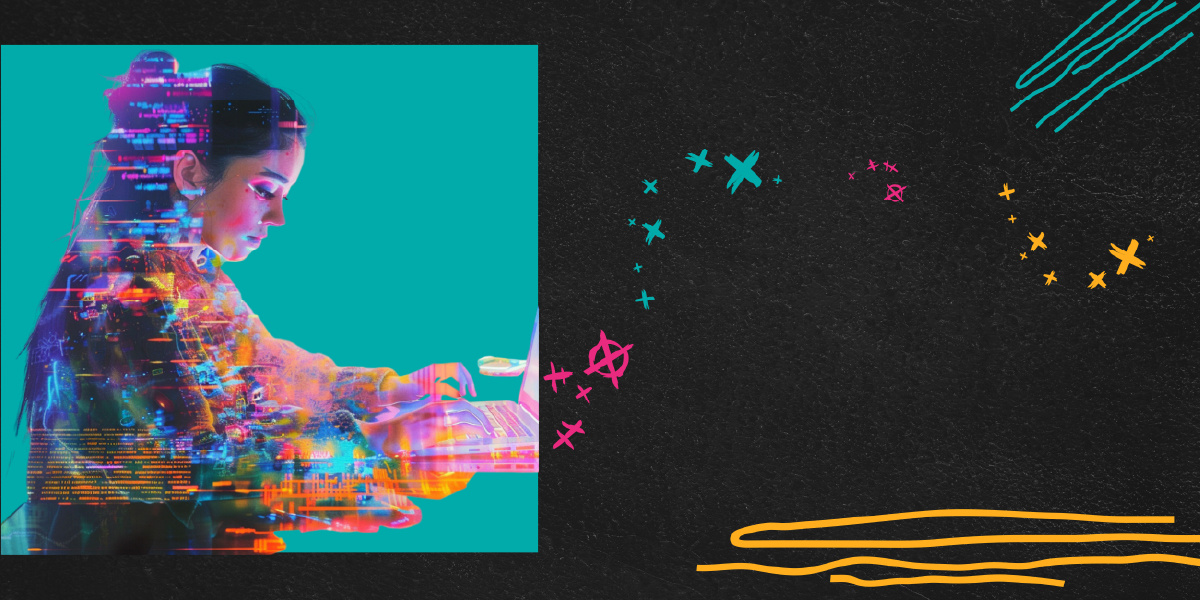In the world of graphic design, innovation has always been at the forefront—whether through new tools, techniques, or trends. But now, a new player has entered the field: artificial intelligence (AI). While AI might initially sound like the stuff of science fiction or robotic art studios, it’s already revolutionising the creative process in ways that range from assisting designers to reshaping entire workflows. So, what does AI mean for designers today, and how will it shape the future of graphic design?
Let’s dive into the opportunities, challenges, and the exciting synergy between human creativity and machine intelligence.
- AI as a Creative Assistant, Not a Replacement
One of the biggest fears surrounding AI is the idea that it will replace human jobs—graphic designers included. However, the reality is that AI serves more as an assistant than a replacement. AI-powered tools are designed to handle repetitive, time-consuming tasks, freeing designers to focus on more conceptual and artistic elements. Imagine this: you need to resize 100 versions of a poster to fit different social media platforms. Instead of spending hours manually adjusting dimensions, AI-powered software can do it in minutes, allowing you more time to focus on important elements, such as visual hierarchy and the creative vision. AI can handle tasks like colour schemes, layout suggestions, and even basic logo designs, while designers keep control over the high-resolution, eye-catching details that truly bring a project to life. - Personalised Design at Scale
AI allows for hyper-personalization in design, which was previously labour-intensive and often impractical. With AI, designers can now create templates and systems that generate personalised visuals for thousands of users, adapting in real-time to customer preferences. For example, a brand might use AI to customise product packaging based on data such as location, past purchases, or personal preferences, using focal points that resonate with the target audience. This scalability means designers can create dynamic, visually-weighted experiences without manually designing each variation.
- Enhanced Collaboration with AI Tools
AI is transforming traditional design tools into intelligent collaborators. Software like Adobe Sensei and Canva’s AI-driven features are enhancing the design experience by offering real-time suggestions, automated layouts, and data-driven design elements. These tools guide the viewer’s attention by helping designers organise negative space, adjust visual weight, and incorporate colour combinations that increase engagement. It’s like having a junior designer on your team, constantly learning from past projects and adapting to trends, while you focus on fundamental principles that require a human touch. - AI as a Muse: Inspiration on Demand
Staring at a blank canvas is every designer's worst nightmare. AI can help break through creative blocks by generating fresh ideas and offering inspiration on demand. Tools like DeepArt and ArtBreeder allow designers to explore creative directions that might not have crossed their minds. By using AI, designers can experiment with black-and-white themes, various colour combinations, and abstract styles, providing new ways to explore visual elements within their work. A designer working on a new project could quickly generate multiple variations of a concept, from colour schemes to visual hierarchy, all within minutes. - Pushing Design Boundaries: Data-Driven Creativity
One of AI's most intriguing contributions to graphic design is the ability to merge data with creativity. AI can analyse user data to predict which design elements—colours, shapes, and fonts—are more likely to evoke emotional responses or drive engagement. Designers can leverage this data to fine-tune their work, ensuring it resonates with the target audience. This doesn’t mean sacrificing creativity for data; it allows designers to use fundamental principles in a way that enhances the impact of their work, creating visually compelling and statistically effective pieces.
- Ethical AI and the Role of Human Oversight
While AI can do a lot, there’s still a crucial role for human judgement and ethics in the design process. Designers need to be vigilant about how AI is used, particularly in areas like image manipulation, representation, and intellectual property. Ethical questions arise when AI mimics styles or artwork—how much is too much, and where does human originality end and machine generation begin? Designers are the gatekeepers of responsible design, ensuring AI-generated work maintains authenticity, aligns with visual elements that are culturally sensitive, and follows design principles that resonate ethically. - Future-Proofing Your Design Career
As AI continues to evolve, designers need to adapt and future-proof their careers. The key is to embrace AI as a tool that augments your skills, rather than seeing it as competition. Staying updated on AI tools, learning to work with them, and understanding the principles behind AI-generated design will make designers even more valuable in the future. Designers who can combine technical knowledge of AI with deep creative thinking will be at the forefront of the industry, leading projects that push the boundaries of what’s possible.

Conclusion: AI + Human = The Future of Graphic Design
AI is not here to replace designers but to empower them. The integration of AI in graphic design is helping automate mundane tasks, enhance creativity, and enable hyper-personalization at scale. The combination of AI-driven tools with human ingenuity is creating new opportunities for innovation and pushing the boundaries of what’s possible in design. For designers, the future looks bright. By embracing AI, you can free your mind for what truly matters—creativity, storytelling, and emotional connection. While AI can assist in creating, it’s the human touch that brings life and meaning to design. So, instead of worrying about AI taking over, think of it as your creative partner—one that helps you take your designs to the next level.
